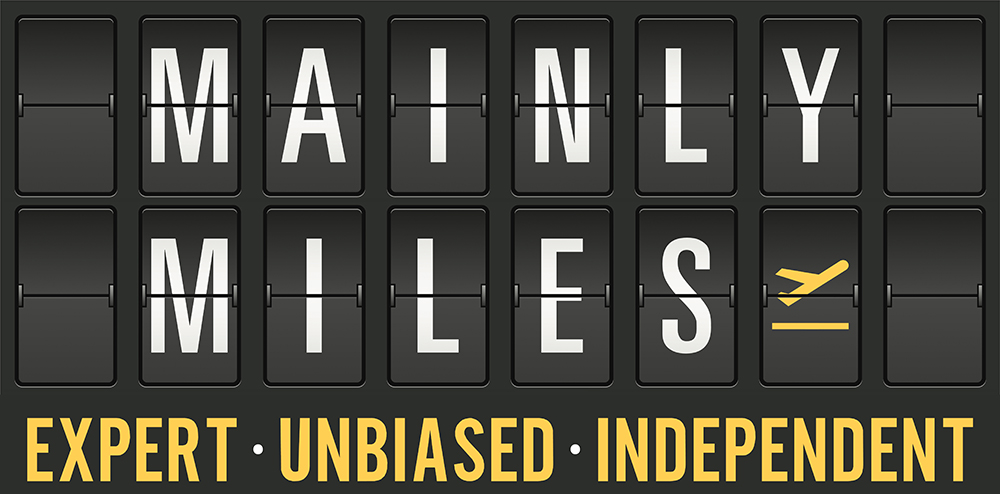There’s more good news for regional border reopening this month, with the Philippines lifting its entry restrictions for fully vaccinated tourists from 10th February, having maintained one of the strictest entry conditions in South East Asia over the last two years.
The new border measures have been possible thanks to an easing of the latest COVID-19 outbreak in the country, with the original intention to relax restrictions on 1st December 2021 scuppered by concerns over a global spread of the Omicron variant.
Tourism stays in the Philippines by non-nationals will be limited to 30 days.
New entry restrictions
From 10th February 2022, the Philippines will allow foreign tourists and business visitors from 157 visa-free countries, including Singapore.
Travellers will have to comply with the following requirements:
- Be fully vaccinated against COVID-19 (at least 14 days after having received the second dose in a two-dose vaccine, or at least 14 days after having received a single-dose vaccine).
- Have a negative PCR test within 48 hours of departure at the first embarkation point in a continuous journey to the Philippines (i.e. where you do not leave the airport premises at any transit points).
- Hold a passport valid for at least six months at the time of arrival in the Philippines.
- Hold valid tickets for their return journey to the port of origin, or next port of destination outside the Philippines, departing not later than 30 days from the date of arrival in the Philippines.
- Have a travel insurance policy covering COVID-19 treatment costs, with a minimum coverage of US$35,000, valid for the duration of their stay in the Philippines.
- Install the ‘TRAZE’ contact tracing app on their personal device before departing to the Philippines.
Eligible visitors who comply with these requirements will no longer be required to undergo facility-based quarantine from 10th February 2022.
No on-arrival testing is required, with passengers able to continue their journey to other parts of the Philippines on domestic flights to reach their final destination, if required (e.g. Manila to Caticlan, for those visiting Boracay).

Travellers are asked to self-monitor for any signs or symptoms of COVID-19 for seven days, with the first day being the date of arrival.
If any symptoms present during this period, travellers are required to report to the local government unit (LGU) of their destination in the Philippines.
Vaccine types and proof
The Philippines recognises the following vaccine types for arriving tourists:
- One of the Philippines’ Emergency Use Authorization (EUA) List vaccines, or those issued under the Compassionate Special Permit (CSP) by the Philippine Food and Drug Administration; or
- Any vaccine on the Emergency Use Listing of the World Health Organization.
Acceptable proof of vaccination for those travelling to the Philippines, which needs to be presented at check-in and on arrival, comprises one of the following:
- A World Health Organization International Certificate of Vaccination and Prophylaxis
- A VaxCertPH
- A National or state digital certificate of a country which has accepted VaxCertPH (see table below) under a reciprocal arrangement (includes Singapore, Australia, UK, USA)
- Other proof of vaccination permitted by the IATF

For most of our readers fully vaccinated with Pfizer, Moderna, Sinovac or Sinopharm in Singapore, there will be no issues here.
What about children?
Children aged under 12 are exempt from the requirement to be fully vaccinated to enter the Philippines quarantine-free, when travelling with fully vaccinated parents.
Children aged under 4 are exempt from the pre-departure PCR test requirement.
Testing costs
Travel to the Philippines will be one of the simpler options in the region, requiring only a single pre-departure PCR test within 48 hours of your flight departure time, plus the testing requirements of your final destination country at the end of your trip.
Pre-departure PCR tests in Singapore on average cost around S$127 on average, though there are a good number of options (160+ clinics) offering tests in the S$98 – S$115 range.

Depending on the requirements of your destination country on departure from the Philippines, you can get a pre-departure test with a travel certificate in Metro Manila at the following approximate costs:
- Antigen (ART): ~PHP750 (~S$20)
- PCR: ~PHP2,700 (~S$70)
Returning to Singapore (non-VTL)
The Philippines is not currently part of Singapore’s Vaccinated Travel Lane (VTL) scheme, so returning travellers will unfortunately be subject to 10 days of self isolation at home (Home SHN) following a trip there, under the country’s current ‘Category 3’ health control measures.
For Singapore Citizens and Permanent Residents this process requires:
- A pre-departure PCR or ART test within two calendar days of the departure date of your flight (e.g. flying Manila to Singapore on Wednesday, test on Monday 00:01 or later).
- Submission of a Health Declaration and Digital Vaccination Certificate (SGAC).
- A 10-day Stay-Home Notice (SHN), served at your place of residence, or a self-sourced serviced apartment or hotel room.
- An SHN exit PCR test, charged at S$125.
Pass holders will additionally need to apply for approval to use the Category 3 lane to enter Singapore. Short-term visitors cannot use this process, but they can transit through Changi Airport en-route to their final destination from the Philippines.
Arrival caps mean expensive flights!
The Philippines has maintained strict caps for daily international arrivals due to the COVID-19 pandemic, most recently restricting passenger numbers into Manila’s Ninoy Aquino International Airport (MNL) to only 3,000 per day.
Luckily the cap into Manila was increased to 5,000 per day last week, a 67% increase, however this remains relatively restrictive and means that air fares to Manila continue to be high, as airlines are forced to operate partly empty flights.
Singapore Airlines is, understandably, prioritising Business Class sales on this route (only three dates in the next month have Economy availability), while also suspending all award space in the SIN-MNL direction.

Even low-cost carriers like Jetstar are charging S$750 – S$1,100 one-way on Singapore to Clark and Manila flights, due to the unusual supply and demand metrics created by the artificial cap.

That’s not likely to change until the arrival caps are lifted more substantially, which they hopefully will be in due course as the Philippines expands tourist arrivals.
Luckily no capacity caps are in force in the Philippines – Singapore direction, so fares and award space are much more similar to pre-COVID days.

The following airlines are currently operating flights between Singapore and the Philippines:
- AirAsia Philippines: Manila
- Cebu Pacific: Manila
- Jetstar Asia: Clark, Manila
- Philippine Airlines: Manila
- Scoot: Cebu, Clark, Davao
- Singapore Airlines: Manila
SIA will also add its own Boeing 737-800 services to and from Cebu and Davao from 27th March 2022.
Filipino nationals
Filipino nationals arriving in the Philippines from overseas will also no longer be required to quarantine if they are fully vaccinated.
Full details of the process and requirements for these travellers are available here.
Asia-Pacific is finally unlocking
So far 2022 is looking really promising for an improvement in travel opportunities across the region.
Asia-Pacific finally seems to be moving in a positive direction when it comes to border relaxations, with recent news of the Australia reopening, not to mention a rebooted tourism scheme in Thailand, and plans by both Vietnam and Malaysia to fully reopen their borders next month.
Even Bali is finally getting in on the act, with progress (of a sort) towards attracting tourists again with a “resort bubble” four-night quarantine format.
Singapore, strangely enough, might be starting to become the ‘odd one out’ in the region soon, with its prescriptive VTL process for quarantine-free entry perhaps due for a rethink, to prevent it looking well past its sell-by date compared to some neighbours.
Summary
The Philippines becomes the latest country in the region to scrap complex concepts like “green / yellow / red list” and open its borders to all travellers from visa-free countries with two simple requirements: be fully vaccinated, and take a pre-departure test.
Hopefully the country’s arrival caps will be further lifted, allowing more flights and capacity from Singapore to the Philippines to become available, which will help fares to normalise again.
For our readers though, most of all it will take an upgrade for the Philippines into Singapore’s VTL category to allow true two-way quarantine-free travel between the countries, or is the VTL concept already starting to look like an unnecessarily complex way to manage a simple problem?
It will be interesting to see how that progresses, with Singapore surely not wanting to be left behind, but in the meantime this significant border relaxation on the Philippines side is a great start.
(Photo: Shutterstock)


Can a PR travel to PH now under this rule?
I saw SQ906 to Cebu and Davao being offered in the SQ website for flights in March, April
Finally, a comment on how Singapore has changed from being a leading light regionally to somewhere decidedly middle of the pack for travel (and middle of the pack is not that great when you consider the tail in this region consists of China and Hong Kong, stalwarts of zero covid).
The idea of designated VTL flights as well as a very restrictive whitelist of 20-something countries is looking very archaic, especially when these concepts were thought up back in a delta low caseload environment. Things like PCR tests on arrival aren’t really having a significant impact on preventing cases in the community when the community already has a lot of spread, is highly vaxxed and the healthcare system is coping. On arrival testing could be stepped back to ART to lower the cost and reduce the isolation period.
With the surrounding region opening up, unless the whole VTL concept undergoes a significant revision, Singapore stands to risk losing a large chunk of the inbound tourism market from those long distance travellers who come to SE Asia and would’ve ordinarily included a Singapore stopover but for the restrictive VTL and costly VTL testing process. Singapore has an international reputation for competent, orderly and fuss free travel – whilst it won’t go back to pre covid times, we can’t let neighbouring countries usurp us because we are too complacent to constantly think about how our travel rules can be improved/streamlined.
What 8s this insurance new policy all about?????
Can Indian passport holder working in Singapore on EP can travel philippines under visa free category ?
Unfortunately not at this stage. Your citizenship / nationality must be among the visa-free countries. Your point of origin is not considered.
Thanks for reply. Priviously having Indians having Singapore work visa can enter without any visa.
It’s probably worth checking with the Embassy of the Philippines in Singapore in that case, but the criteria (as I read it) says you must be a citizen or a national of one of the 157 visa-free countries.